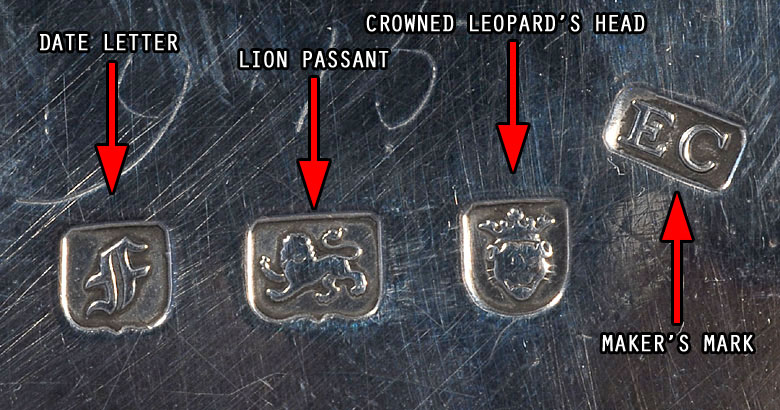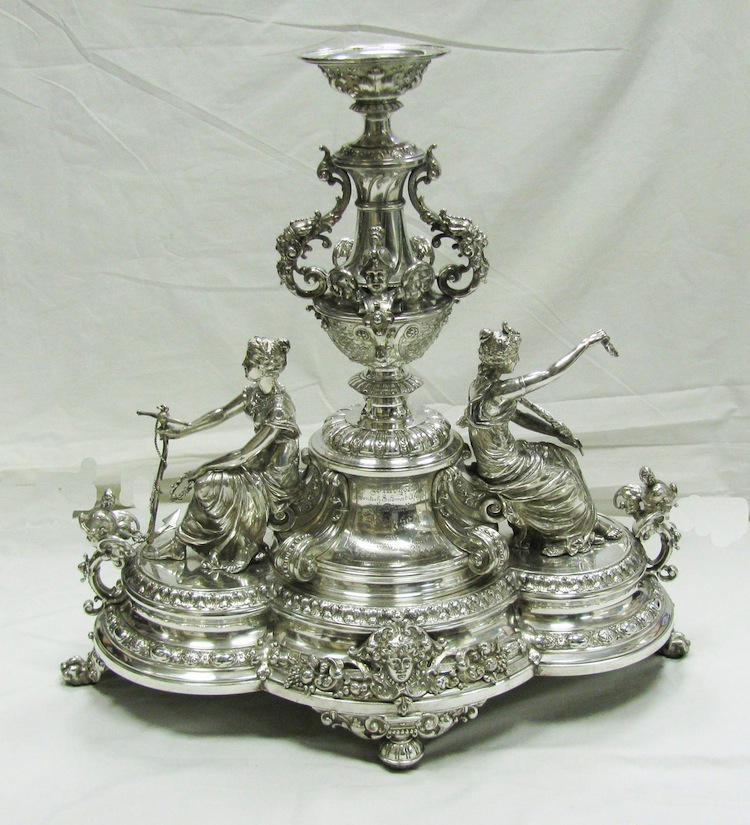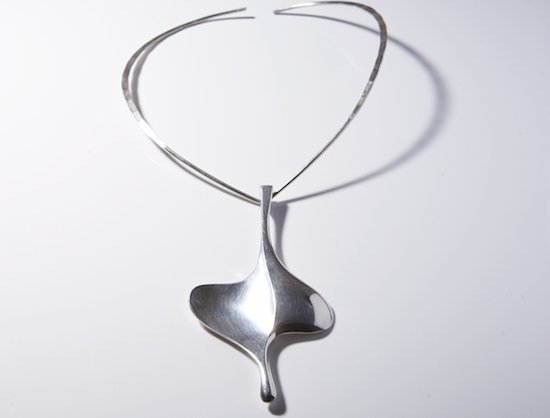BRITISH HALLMARKS
Hallmarking History
Hallmarking was originally introduced in 1300 by a Statute of Edward I and is probably the earliest form of consumer protection.
Hallmarking is necessary because when jewellery is manufactured, precious metals are not used in their pure form, as they are unworkable. Gold, Silver, and Platinum are always alloyed with copper or other metals to create an alloy that is more suitable to the requirements of the jeweller. Such an alloy needs to be strong, workable and attractive.
Due to the high value of gold, platinum and silver, there are significant profits to be gained by reducing the precious metal content of an alloy at the manufacturing stage. Even an expert cannot determine the quality or standard of precious metal items by eye or touch alone. Base metal articles plated with a thin coat of gold or silver are indistinguishable from the same articles made wholly of precious metal until subjected to expert testing.
With volume manufacturing, enormous profits can be made from undercarating. Without compulsory independent testing there is huge potential for deception and fraud.
The UK Hallmarking system has offered valuable protection for over 700 years. Compulsory Hallmarking protects all parties; the public who receive a guarantee of quality, the manufacturer who is given quality control and protection from dishonest competitors at a very low cost and the retailer who avoids the near impossible task of checking standards on all his goods.
Brief History of UK Hallmarks
Hallmarking is the world’s first known instance of consumer protection law, in the UK it dates back to about 1300 AD.
| Date | Event |
| 1300 | Hallmarking introduced in UK |
| 1378 | Town Marks Introduced |
| 1477 | 18 Carat Replaces 191/5 Carat as Standard Gold |
| 1478 | Date Letters Introduced |
| 1478 | London Assay Office Opened |
| 1544 | Lion Mark Introduced for Sterling Silver |
| 1575 | 22 Carat Replaces 18 Carat as Standard Gold |
| 1681 | First Edinburgh Date Letters |
| 1697 | Britannia Mark Introduced for Silver |
| 1701 | Castle Mark Introduced for Exeter |
| 1720 | Sterling Silver Standard Re-admitted |
| 1731 | Hibernia Mark Introduced for Dublin |
| 1759 | Thistle Mark Introduced for Edinburgh |
| 1773 | Birmingham Assay Office Opened |
| 1773 | Sheffield Assay Office Opened |
| 1774 | Duty Mark Imposed |
| 1798 | 18 Carat Reintroduced in Addition to 22 Carat |
| 1819 | Lion Rampant Mark Introduced for Glasgow |
| 1842 | Customs Act Requiring Foreign Goods to Have British Hallmark |
| 1854 | 9 Carat Introduced |
| 1854 | 12 Carat Introduced |
| 1854 | 15 Carat Introduced |
| 1856 | York Assay Office Closed |
| 1867 | Foreign Mark Introduced |
| 1882 | Exeter Assay Office Closed |
| 1890 | Duty Mark Dropped |
| 1904 | Carat Marks Compulsory on Gold |
| 1932 | 12 Carat Mark Discontinued |
| 1932 | 15 Carat Mark Discontinued |
| 1932 | 14 Carat Introduced |
| 1934 – 1935 | Silver Jubilee Mark Used |
| 1952 – 1953 | Silver Jubilee Mark Used |
| 1953 – 1954 | Coronation Mark Used |
| 1962 | Chester Assay Office Closed |
| 1964 | Glasgow Assay Office Closed |
| 1973 | Hallmarking Act |
| 1974 | British Hallmarking Council Formed |
| 1976 | Platinum Mark Introduced |
| 1976 | UK Ratifies Convention Mark |
| 1977 | Silver Jubilee Mark Used |
| 1998 | Revised Hallmarking Acts |
| 1999 | New Acts Become Effective |
| 1999 – 2000 | Millennium Mark Used |

A typical set of antique British silver hallmarks showing (left to right) ; Standard Mark, City Mark, Date Letter, Duty Mark and Maker’s Mark
This group of marks tells us that this piece was made of Sterling, in the city of London, in the year 1789, during the reign of King George III, by the silversmith Thomas Wallis.
Note – British hallmarks come in sets, the rule of thumb is, if you do not have a complete set including:
Standard mark, city mark, date letter and maker’s mark [+ a duty mark if 1785-1890], the item is
either from another country or a piece of silverplate with a hallmark-like trademark.











